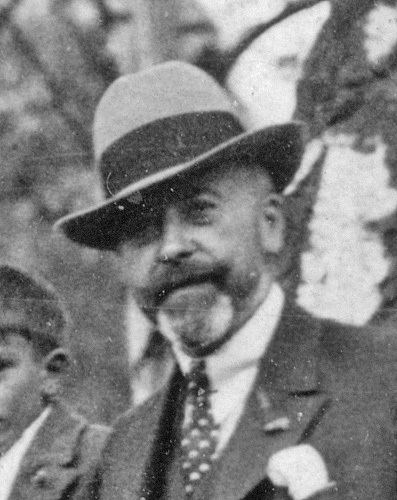Name Nestor Cambier | Died 1957 | |
 | ||
Nestor Cambier (1879–1957) was a Belgian artist and draftsman whose portraits were compared favourably with those of John Singer Sargent but who now is largely forgotten. He also painted landscapes, city and interior views, still-lives, murals and stained glass, and also produced numerous pencil and chalk drawings.
Contents
- Early life and training
- Professional life
- Posthumous fame
- Honours
- Dated works
- Undated pictures
- Undated portraits
- References
Early life and training
He was born in Couillet (now part of Charleroi) in Belgium. He studied at the college of Ixelles, Brussels before entering the Académie Royale des Beaux-Arts in Brussels, studying portraiture under the masters Joseph Stallaert and Gustave Vanaise until 1900. At twenty-one, he had already exhibited at the Brussels Salon, with a portrait of a young girl and a landscape.
Professional life
In 1903, N. Cambier exhibited at the Triennial Salon of Beaux Arts at Brussels with pictures of a Brabançon innkeeper, a colourful Bazaar, a large tableau of the Cid and the Leper, and a study in pastels of Salome.
He went to the United States (1906–1909), working first at Ascenzo’s studios. He continued to paint portraits and in 1907 he exhibited at the Academy of Fine Art in Philadelphia, Pennsylvania where he won the John Wanamaker prize. Later, he designed large stained glass windows for the Cathedral Basilica of the Sacred Heart, , Newark, New Jersey, while it was still under construction. (However recent investigation shows that delays in construction resulted in the 214 stained glass windows not being completed until 1950, by when they had been re-designed by the maker, Franz Zettler.)
He returned to Belgium in 1909, where he painted further portraits and extended his painting to landscapes. In 1914, he held an exhibition of his works at Blankenberge, Belgium, where he was almost trapped when Germany invaded Belgium at the start of the First World War, and which resulted in the loss of many of his canvasses.
He then spent 19 years intermittently in the United Kingdom (1914–1933), and in 1915 and 1916 he donated some of his works for auction on behalf of the British Red Cross, reaching prices comparable with the best English painters. In 1923, he became a member of the North British Academy of Arts in 1923. This period was notable in that he became a resident guest of Sir Henry and Lady Barber at Culham Court, near Henley, Oxfordshire. During this time, he painted numerous portraits of different kinds of Lady Barber (1869–1932), as well as pictures of the interior of Culham Court and the surrounding countryside.
Posthumous fame
Following his death in Brussels in 1957, a retrospective show was held in Brussels in 1967 at the Baron René Steens gallery. His works are allegedly displayed in Birmingham, London, Paris, Rheims and Lausanne.
Perhaps the largest collection of paintings (25, plus numerous photographs and memorabilia) by Cambier are held by The Barber Institute of Fine Arts which was founded by Dame Martha Constance Hattie Barber (1869–1933) at Birmingham University, who married the solicitor and property developer, William Henry Barber, a highly successful businessman who made his fortune in the expanding suburbs of Birmingham. By his mid 1930s he and Lady Barber were able to retire to Culham Court, an 18th-century estate in Oxfordshire. Between 1914 and 1930, Cambier was a frequent visitor and resident at Culham Court where he painted landscapes of the estate and painted eighteen portraits commissioned by Lady Barber as presents for her husband. Lord Barber died in 1927, and Lady Barber founded the Institute in 1932 to which all the paintings were transferred. Otherwise, all his other paintings appear to be scattered and in private hands.
Honours
Dated works
Paintings held by the Barber Institute of Fine Arts marked *
Undated pictures
unless otherwise indicated
Musées Royaux des Beaux-Arts, Illustrations of volumes by R. Bazin, Comte Carton de Wiart (Mes Vacances av Congo), Charcot.
Original drawing on the fly leaf of a catalogue. Type Brugeois, portrait sketch in colour pencil ca. 9 x 7 cm.
Vivid portrait sketch made by the artist while visiting the Bruges Salon of 1913-14, made on the fly-leave of the Salon Catalogue: Cercle Artistique Brugeois, XXXVIe Salon, in-8°, 21.5 x 11 cm, stapled, original stiff wrapper. Nestor Cambier was represented by 5 paintings. Of these 4 were marked in red by him with the remark that they were stolen by the Germans at Blankenberg.
Undated portraits
Sir Douglas Dawson, secretary of the Order of the Garter
